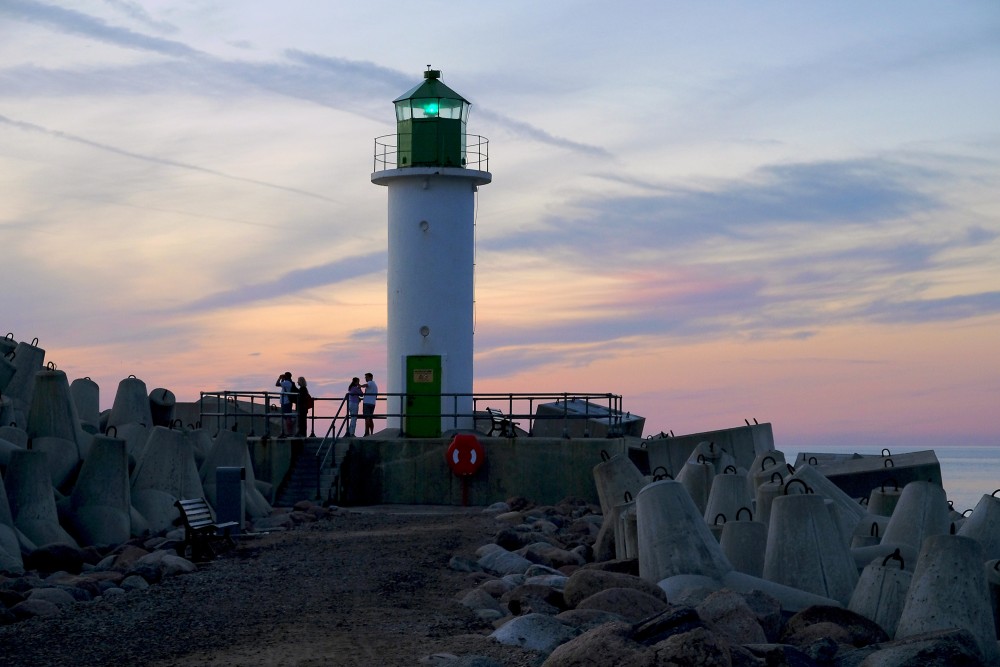Latvia historic lighthouses have guided ships and protected coastlines for over two centuries. These towers remain vital landmarks along the Baltic Sea. Each lighthouse holds stories of sailors, storms, and survival. These tall sentinels symbolize both safety and tradition. Coastal communities once depended on them for trade and travel. Today, they preserve Latvia’s maritime legacy and attract curious travelers. Their beauty and location offer excellent opportunities for cultural tourism. Exploring these towers connects visitors with Latvia’s rich coastal heritage.
Latvia Historic Lighthouses in the Kurzeme Region
The western region of Kurzeme is home to some of Latvia’s oldest and most famous lighthouses. They stand near fishing villages and on remote beaches. These towers remain crucial parts of Latvia’s maritime story.
Notable examples include:
-
Uzava Lighthouse, built in 1879, offers panoramic views from 88 steps.
-
Akmeņrags Lighthouse has a red-brick body and a powerful light beam.
-
Oviši Lighthouse is Latvia’s oldest, with thick stone walls and a museum.
These landmarks blend functionality with unique architectural style. Local residents see them as symbols of resilience. They reflect how Latvia protected its coast for generations. Many still operate and welcome tourists today. They are essential sites in understanding Latvia historic lighthouses.
The Story of Oviši Lighthouse: Latvia’s Oldest Beacon
Oviši Lighthouse, near the village of Oviši, stands as Latvia’s oldest operating lighthouse. Built in 1814, it served ships along the dangerous northern coast. Its sturdy cylindrical shape resists wind and salt. The tower rises 37 meters and features a museum inside. Visitors can explore displays about maritime history and navigation.
Inside the museum, you will find:
-
Antique tools once used by lighthouse keepers
-
Historical maps and sea charts
-
Maritime equipment and signal systems
Oviši Lighthouse continues to function today. It combines utility with historical importance. As part of the Latvia historic lighthouses network, it remains a popular destination.
Latvia Historic Lighthouses in Riga Bay
The Gulf of Riga features both urban and rural lighthouses. These towers helped ships enter Riga, Latvia’s capital and key port. They still support navigation and attract history lovers.
Key lighthouses include:
-
Daugavgrīva Lighthouse, located near Riga, painted in distinctive black and white stripes
-
Mērsrags Lighthouse, found in a small fishing village, dates back to 1875
-
Slītere Lighthouse, built inland on a forested hill, stands uniquely away from the shore
These towers vary in size and style but share a strong connection to Latvia’s seafaring past. Together, they form an important part of Latvia historic lighthouses and coastal defense systems. Many also sit within protected nature parks, ideal for hiking and exploration.
Lighthouses in Latgale: Inland Influence on Coastal Identity
Although Latgale is not a coastal region, its people share in Latvia’s maritime story through river navigation. Rivers like Daugava once connected inland towns to ports and the sea. This flow of goods and stories helped spread seafaring traditions.
Highlights of Latgale’s connection to coastal heritage:
-
Traditional boat festivals in inland towns
-
Wooden ship models in Latgale’s regional museums
-
Shared folklore about water spirits and safe travel
These inland stories reflect how Latvia historic lighthouses influence the entire nation, even areas far from the coast.
Lighthouse Keepers: Unsung Heroes of the Baltic Coast
Behind every working lighthouse stands a dedicated keeper. These individuals ensured lights stayed on during storms and dark nights. They faced solitude, harsh weather, and high responsibility. Many lived near their towers with their families.
Fascinating facts about lighthouse keepers:
-
Some keepers passed their duties down through generations
-
They often recorded daily weather in logbooks
-
Many had to climb stairs dozens of times daily to maintain the lights
Though automation replaced many roles, museums now honor their efforts. Their legacy lives on in the soul of Latvia historic lighthouses.
Architectural Styles of Latvia Historic Lighthouses
Latvia’s lighthouses showcase a variety of architectural designs. From brick towers to concrete cylinders, each reflects the era of its creation. Some resemble castles, others feel more industrial.
Types of lighthouse architecture in Latvia:
-
Brick Gothic towers (like Akmeņrags)
-
Soviet-era concrete structures
-
Stone-based classic beacons (like Oviši)
Each design responded to practical and environmental needs. Harsh Baltic winds, sand erosion, and salt air shaped their construction. These towers are both useful and visually striking.
Marine Biodiversity Near Lighthouse Sites
Latvia’s coastline holds more than history. It shelters important marine ecosystems. Seals, seabirds, and rare plants live near many lighthouse locations. These natural features attract eco-tourists and conservationists.
Coastal ecosystems near Latvia historic lighthouses include:
-
Grey seal colonies in Slītere National Park
-
Bird migration paths along the Baltic Sea
-
Coastal meadows with native flowers and herbs
Tourists can explore nearby trails, birdwatching stations, and eco-museums. Lighthouses now stand as guardians of both history and biodiversity.
Modern Technology Meets Maritime Tradition
Some of Latvia’s lighthouses now feature modern technology while preserving their old structures. Solar-powered lights and automated controls have replaced manual operations. Still, many towers remain open to the public.
Modern updates found in historic Latvian lighthouses:
-
Energy-efficient lighting systems
-
Solar panels and battery storage
-
Remote monitoring for maritime safety
These upgrades ensure sustainability while respecting Latvia’s rich lighthouse legacy. They show how tradition and innovation can work hand-in-hand.
Events and Tours Dedicated to Latvia Historic Lighthouses
Local tourism boards and heritage groups organize regular tours and events at lighthouse locations. These activities promote education and preservation. Visitors gain a deeper connection to maritime culture.
Common lighthouse events and attractions:
-
Lighthouse Day tours every August
-
Maritime history workshops for children
-
Guided hikes linking several lighthouse sites
Many of these events include storytelling, music, and local food tastings. This makes Latvia historic lighthouses accessible to families, students, and heritage travelers alike.
Coastal Heritage Beyond the Lighthouses
Latvia’s coastal identity goes far beyond its towers. Fishing villages, seaside customs, and traditional foods enrich its coastal culture. Wooden boat-making and seasonal festivals are still practiced today.
Cultural highlights include:
-
Fishermen’s celebrations, especially during the midsummer solstice
-
Local seafood dishes served fresh near the ports
-
Handcrafted nets and wooden boats passed down through generations
The coastal lifestyle shaped Latvia’s art, music, and architecture. Villages still depend on the rhythm of the sea. While Latvia historic lighthouses symbolize coastal heritage, daily life along the shore preserves it.
Fun Facts About Latvia Historic Lighthouses
Latvia historic lighthouses offer surprising details beyond their appearance. Here are several interesting facts about these landmarks:
-
Oviši Lighthouse is over 200 years old and still works
-
Akmeņrags Lighthouse’s beam can reach nearly 20 nautical miles
-
Some lighthouses were military zones during Soviet times
-
A few towers can now be rented for overnight stays
-
Latvia has more than 60 functioning coastal navigation structures
These facts help us appreciate how these lighthouses contribute to national history. They combine engineering, culture, and natural beauty.
Coastal Trails and the Lighthouse Route
Latvia offers a well-marked lighthouse route for coastal travelers. This trail links major towers from the Kurzeme coast to Riga Bay. It invites hikers, bikers, and road trippers alike.
A suggested itinerary might include:
-
Begin in Liepāja and drive north to Ventspils
-
Stop at Oviši, Akmeņrags, and Slītere lighthouses
-
Head to Riga via Mērsrags and Daugavgrīva
-
End at Cape Kolka, where the sea meets the gulf
Each stop offers access to beaches, nature, and Latvian history. The full route makes for an unforgettable exploration of Latvia historic lighthouses.
Lighthouses are more than navigation tools. They are monuments to Latvia’s enduring relationship with the sea. Each tower tells a story of innovation, community, and resilience. Preserving them keeps maritime history alive. Visiting these sites supports coastal regions and spreads cultural appreciation. They remind us how land and water shape national identity. Latvia historic lighthouses will continue to inspire, guide, and protect for generations to come.

